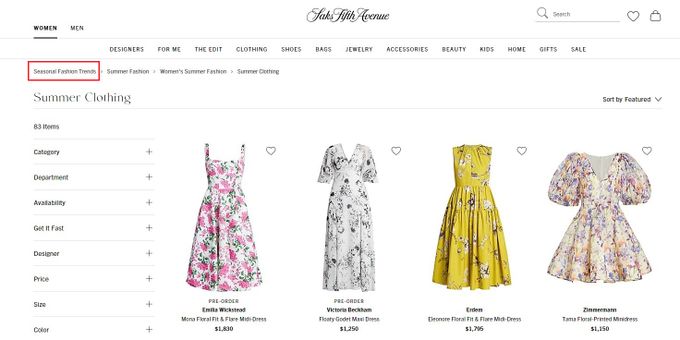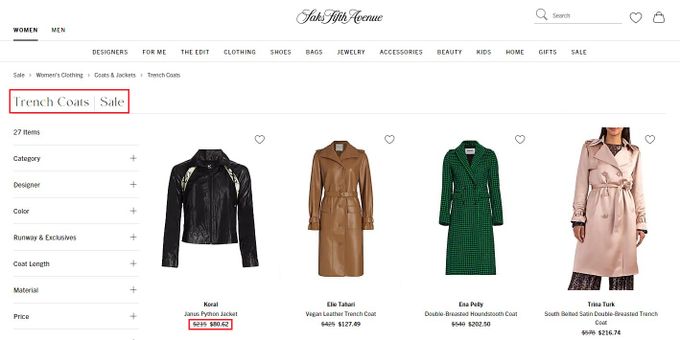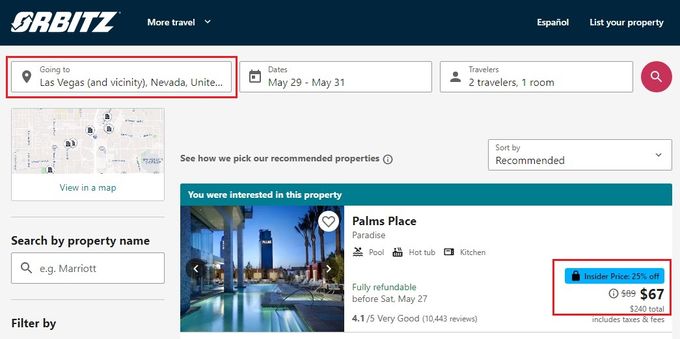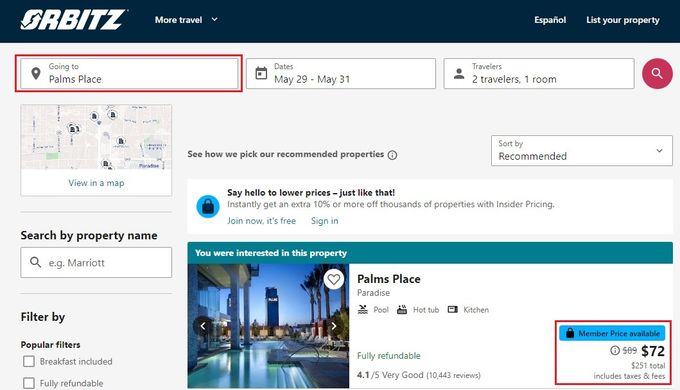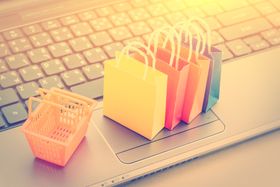Dynamic vs. Personalized Pricing: How Do They Differ?
Looking to change your pricing strategy? Compare dynamic vs. personalized pricing to make the right choice for your eCommerce store.
Updated November 23, 2024.

A pricing strategy is essential to the success of any business—a massive 85% of shoppers consider pricing when deciding where to shop. Two popular pricing strategies are dynamic and personalized pricing. While personalized pricing is specific to each customer, dynamic pricing is based on external and market-related factors.
Below, we explore the key differences between dynamic vs. personalized pricing, including pricing decisions, customer perception, and implementation, to help you choose the best one for your store.
» Ready for personalized pricing? See our personalization tools
What Is Dynamic Pricing?
Dynamic pricing is a flexible pricing strategy where merchants adjust their prices in real-time according to market changes, like competitor pricing and supply and demand.
Dynamic pricing relies on algorithms that monitor trends and changes in the market and adapt prices accordingly. This way, you can maximize profit by selling the same product at different prices under different conditions.
Airlines often use dynamic pricing to maximize flight revenue by charging higher fares during peak travel times and lower fares during off-peak times. Other industries that frequently use dynamic pricing include hotels, rideshare services, and online clothing retailers.
» See these other eCommerce personalization strategies
Benefits of Dynamic Pricing
- Saves money: Since most of the work in dynamic pricing can be handled by personalization software, you can optimize your prices to get the most out of your products without spending much on extra resources.
- Push stock and sales: Alternating your product pricing allows you to push slow movers with sales and lower prices, while also leveraging maximum profits on high-demand products.
- Competitive advantage: Keeping track of market conditions allows you to offer better prices than your competitors, helping build sales and customer loyalty.
» See how personalization technology is evolving
Dynamic Pricing Example: Saks Fifth Avenue Heats Up Summer Prices
Saks Fifth Avenue, a luxury fashion and designer clothing store, charges premium rates for their summer range at the start of the season, knowing that the demand for these items will be high. However, at the same time, they offer substantial discounts on their winter items.
Strategies for Dynamic Pricing
Peak/Surge Pricing
This strategy involves charging more for products during peak buying times when customers are guaranteed to need to make purchases. For example, Uber charges more for rides during rush hour traffic or even rainy weather.
Time-Based Pricing
This strategy adjusts prices in various ways:
- Seasonally: Certain products, such as Easter-themed chocolates, might be priced higher right before Easter, only to have their prices decreased afterward as demand decreases.
- Urgency: Some companies might offer premium prices to have products delivered immediately while offering discounts for regular shipping.
- Product "newness": New arrivals and best sellers may have a premium price tag, while older products might be discounted.
- Events: This is a combination of urgency and relevance to particular events. For example, ticket prices for a concert may start to increase as the date of the concert approaches.
Location-Based Pricing
It stands to reason that certain neighborhoods and countries might have higher general affluence than others and may be willing to pay more for particular products than less affluent neighborhoods and countries. As such, some eCommerce owners opt to charge wealthier individuals more to match the surrounding market conditions.
» Discover the difference between B2B and B2C personalization
What Is Personalized Pricing?
Personalized pricing is a personalization tactic that involves charging customers different prices for the same product based on the individual's purchase history, location, and browsing behavior.
» The first step to personalized pricing is effective customer segmentation
You can use individual customer data to offer personalized discounts to stay competitive, improve customer satisfaction and loyalty, and boost sales. If your data indicates that a customer is willing to pay more for a particular product, you can adjust your prices accordingly.
Industries that commonly use personalized pricing include eCommerce, travel, and insurance.
» Discover the benefits of personalized digital marketing
Benefits of Personalized Pricing
- Enhanced customer experience: With effective personalized pricing and merchandising, customers often feel like your store is providing them with the exact products they need in their budget, which helps make them feel valued.
- Improved customer loyalty: Some personalized shopping and pricing strategies, like loyalty discounts, could influence customers to purchase more to access those discounts, boosting customer loyalty and revenue.
- Higher conversion rates: Personalized pricing allows you to target price-sensitive and non-price-sensitive customers with similar products, catering to a larger market and increasing your overall sales and conversion rates.
» Don't forget to personalize your landing pages
Personalized Pricing Example: Orbitz Tailors Pricing According to Customer Search
Orbitz, an online travel booking platform, is a good example of personalized pricing in action. A customer searches for accommodation in Las Vegas and is quoted $67 for Palms Place. A second customer searches for the same dates and number of guests but is quoted a higher price of $72. The difference is that the second customer specified they wanted to book at Palms Place, indicating a greater willingness to pay a higher rate.
Strategies for Personalized Pricing
Loyalty Discounts
Having a loyalty system built into your eCommerce store is a great way to personalize the customer experience. If customers shop with you, they have the chance to access future discounts, encouraging them to keep buying more.
Product Bundles
Grouping products together in product bundles with a discounted overall price can help you push slow-moving stock with more popular items and boost your average order value. Additionally, consider offering custom bundles that allow users to further customize their experience exactly the way they want.
» Learn more: Our guide to eCommerce product bundling
Using AI
When it comes to dynamic and personalized pricing, using AI is a no-brainer as it can scan through far more data like purchasing history and customer demographics and develop algorithms to maximize potential profit.
» Learn more about AI-based personalization
Premium Services
Offering memberships and luxury services with exclusive perks at premium prices is a great way to maximize the profit potential of high-value customers without discouraging the lower spenders. Premium services are an optional add-on that's not completely necessary, such as free shipping on all orders.
» Decode personalized pricing further to increase your sales and customer engagement
Key Differences Between Dynamic and Personalized Pricing
| Feature | Dynamic Pricing | Personalized Pricing |
|---|---|---|
| Pricing Decisions | Based on market demand and other external factors such as seasonality, competition, availability, and even the time of day. | A form of behavioral marketing based on individual customer data and behavior, such as purchase and search history, browsing behavior, and location. |
| Customer Perception | Creates a sense of urgency and excitement for customers as prices can change in real-time based on demand, encouraging them to act quickly to secure the best deals. | Can help you instill trust and loyalty in your customers by offering special deals and discounts. |
| Implementation | Can be implemented through sophisticated algorithms and AI technology that quickly and accurately process vast amounts of market-related data. | Uses advanced data analysis methods like predictive analytics, but the data input differs. It requires individual customer data analysis and audience segmentation based on preferences and behavior. |
| Target Audience | The broader market | Individual customers |
| Flexibility | Less flexible, catering to slight changes in market conditions | Extremely flexible, catering to unique perceptions |
» Learn more about the exciting future possibilities of AI and retail
Find the Right Pricing Strategy Fast
Dynamic and personalized pricing are two popular pricing strategies you can use to optimize revenue and customer satisfaction. But understanding the differences is important if you're looking to implement an effective pricing strategy that suits your unique needs and goals. Remember, it's essential to be flexible and continuously monitor and adjust your pricing strategy for the best possible results.
» Create irresistible deals with the right personalized pricing tools & flexible payment methods
